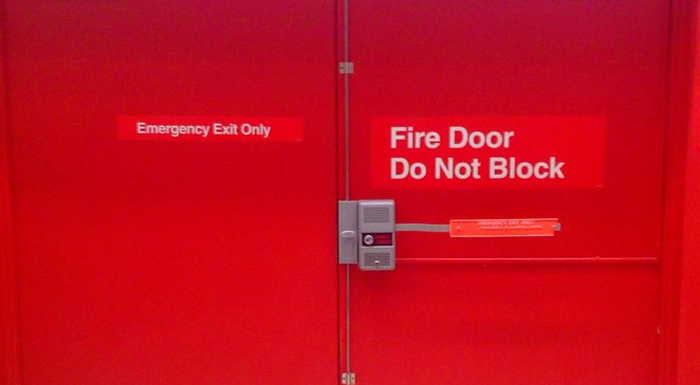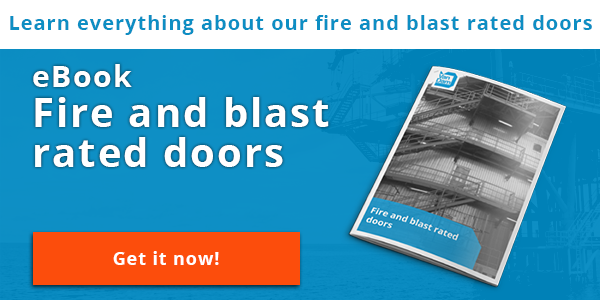
Hydrocarbon fires, or pool fires, are more severe and pose more danger than cellulosic fires. These types of fires are fuelled by hydrocarbon compounds (oil and gas), having a high flame temperature to 1000°C [1832°F] within 5 minutes, achieved almost instantaneously after ignition. The rapid rise in heat can cause serious injuries to people and irreparable damages to equipment. Therefore, hydrocarbon fires, if ignited, need to be contained and stopped as soon as possible before any damage is done.
In this article, I will take a close look at H120 fire rated doors which are specially designed to contain and/or slow the spread of hydrocarbon fire in any industry where hydrocarbons might be present.
H120 fire rated door: rules and regulations
The highest risk of hydrocarbon fires can be found in the oil and gas industry. Up to date, there are no internationally recognized hydrocarbon fire test standards for fire protective products. Used standards for hydrocarbon fire test are e.g. the UK Department of Energy Hydrocarbon Time/Temperature Relationship and IMO Resolution MSC.307(88) Performance Criteria. This is accepted as an industry standard, among which all major Notified Bodies (NOBO’s) (e.g: LR, DNV-GL, BV, ABS, etc.)
In general, hydrocarbon class divisions, also known as “H” class division, have to be insulated with non-combustible or equivalent materials such that the mean temperature at the unexposed side will not rise more than 140oC above the original temperature, nor will the temperature at any one point, including any joint, rise more than 180oC above the original temperature, within the time listed below:
- H120 - 120 minutes
- H60 - 60 minutes
- H0 - 0 minutes (H0 stands for 120 min of integrity during a hydrocarbon fire event)
H120 rated doors can be constructed in three types, namely;
- Single hinged;
- Double hinged;
- Sliding.
The hardware of a standard H120 rated door consists out of heavy duty stainless steel. The door leaf has a box type design with stiffeners (to limit the deflection during a fire event) and insulated with ceramic fiber to meet the H120 fire rating. “Standard” clear openings are 900 x 2100 for single hinged and sliding doors and 1800 x 2100 for double hinged doors, however according to project specifications the door dimensions are customized.
They can be engineered to meet additional requirements such as weather and gas tightness requirements. In order to comply with international standards, the doors should be designed to meet the requirements in SOLAS 74 and IMO FTP code and should be type approved by Lloyd’s Register, ABS and USCG.
Want to know more about hydrocarbon fire rated doors? Download our eBook now!







